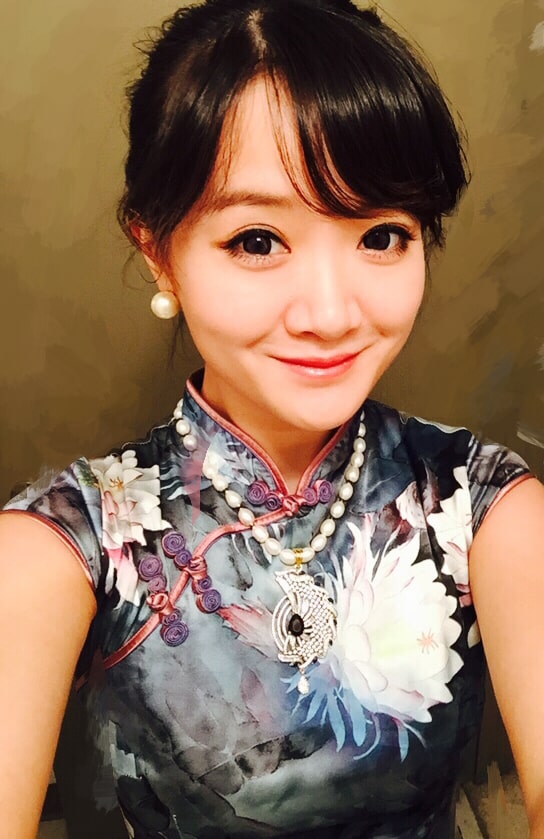Understanding Common Chinese Symbols – A Comprehensive Beginner’s Guide

A Complete Introduction Guide to Common Chinese Symbols: Mastering the Basics
Learning Chinese characters can feel pretty intimidating.
At first glance, Chinese symbols might seem utterly confusing and weird – kinda like abstract art. It’s interesting and curious, but being able to understand, read, and write them fluently? Yeah, it may feel like a far-off pipe dream.
However, behind every stroke and line hides layers of meaning that go way deeper than just letters on a page. These symbols offer you a window into ancient traditions and different ways of seeing the world.
It’s a beautiful language that connects you to centuries of culture and history.
That said, we’re not going to pretend mastering Chinese is easy.
With thousands of distinct traditional Chinese characters, unfamiliar grammar, and tricky tones for every syllable, it’ll take tons of patience and practice before you become fluent. But the journey is absolutely worth it.
And that brings us to our guide today. We’re going to be deep-diving the very basics of common Chinese characters. We’ll look at the most common Chinese characters, as well as some interesting traditional Chinese you’re going to want to know.
So, without further ado, let’s get into it.
The History of Chinese Symbols
When you first take a look at even the most common Chinese characters, they may just look like an intricate and inaccessible canvas of lines and curves. But just like the Western latin alphabet we know and understand, Chinese symbols, or characters, have a history as significant and profound as China’s grand civilization itself.
For greater understanding, let’s take a peek at where they came from and how the Chinese character got to where it is today.
Origin and Evolution of Traditional Chinese Characters
Chinese writing first emerged over 3,000 years ago during the Shang Dynasty, when prophets carved early traditional character forms known as oracle bone script onto animal bones. Talk about intense!
These carved symbols evolved over centuries, morphing through different script styles like Bronze before finally settling into the modern standard used today.
To break it down, the key phrases of evolution for many Chinese characters look like this:
Oracle Bone Script –> Bronze Script –> Seal Script –> Clerical Script –> Regular Script (Modern Standard Mandarin)
Impact of Cultural and Historical Context on Symbol Development
One of the most interesting considerations when it comes to traditional character symbols is the fact that the evolution of traditional Chinese characters has always been tied to what was going on culturally and politically.
When a new dynasty (similar to a Chinese government) took over or philosophical thought shifted, Chinese writing would often change, too.
It wasn’t random – the transformations reflected that era’s historical forces and social dynamics.
So, when you look at the development of these symbols over thousands of years, you get snapshots into the rise and fall of different ruling powers and schools of thought. It’s pretty wild! Each reform tweaked the script to align with key values or messages of the time.
Today’s standards continue to carry all these layers of cultural and historical significance within every brushstroke.
There’s a super rich interplay between traditional Chinese characters and society.
Comparison with Alphabetic Languages
Now, unlike the alphabet and other characters we use in English and other European languages, Chinese doesn’t symbolize sounds. Instead, each Chinese character captures the essence of a whole word or meaning.
This means instead of just 26 letters to combine, you have to memorize thousands of distinct Chinese characters! It’s no walk in the park, but the payoff is depth and immense cultural resonance.
At first, staring down a page full of intricate symbols and alternative characters can feel super overwhelming. But remember, behind each one is a world of tradition and stories reaching back generations.
When you persist past those initial hurdles, you’ll gain access to the profound meanings at the core of this unique language. And unlocking all that history and culture makes the effort incredibly rewarding!
Common Traditional Chinese Characters, Symbols, and Their Meanings
One of the coolest parts of learning Chinese is figuring out the meaning behind each unique symbol you encounter. It becomes like a captivating puzzle as you gradually unlock all these visual emblems of core ideas.
As you immerse yourself in this language, here are some key traditional Chinese characters you’ll probably see pop up all over the place:
Most Popular Chinese Symbols
- 爱 (ài) – Meaning ‘love,’ this is a symbolic representation of heartfelt emotions. For instance, “我爱你” (Wǒ ài nǐ) translates to ‘I love you’.
- 和 (hé) – This symbol stands for ‘peace’ or ‘harmony.’ An example usage is “和平” (hé píng), meaning ‘peace’.
- 国 (guó) – Representing ‘country,’ this is a frequently used symbol. It’s often seen as “中国” (Zhōng guó), the word for ‘China.’
- 人 (rén) – Quite simply, this symbol means ‘person.’ You’ll often see it in “中国人” (Zhōng guó rén), meaning ‘China people=Chinese’.
- 大 (dà) – This one means ‘big’ or ‘great’. In a sentence, “他的房子很大” (Tā de fáng zi hěn dà) refers to ‘His house is big’.
- 小 (xiǎo) – The converse of ‘big’, this symbol signifies ‘small’. You might come across it in “小狗” (xiǎo gǒu), which means ‘little dog’.
- 家 (jiā) – Translating to ‘family’ or ‘home’, this symbol forms part of phrases like “家人” (jiā rén), meaning ‘family’.
- 学 (xué) – This symbol stands for ‘to learn’. An apt illustration is “学校” (xué xiào), meaning ‘school’.
- 谢 (xiè) – This lovely term translates to ‘thank’. You’d often see it in “谢谢” (xiè xie), the polite expression for ‘thank you.’
- 生 (shēng) – Translating to ‘life’ or ‘birth’, this symbol is found in “生日” (shēng rì), implying ‘birthday’.
These ten symbols are just the icing on the cake, the first few strokes on the broad canvas of the Chinese language. As you delve deeper, you’ll discover a plethora of symbols, each more intriguing than the last!
Easy Chinese Symbols for Beginners
Starting from scratch with Chinese characters can make your head spin. Thousands of complex shapes to memorize? No thanks!
Luckily, you can ease yourself in gradually. Here are 6 super common characters that are perfect for dipping your toes into reading Chinese:
- 一 (yī) – Meaning “one,” this little line appears everywhere, like in the word “一起” (yì qǐ) meaning “together.”
- 二 (èr) – It signifies the number two and shows up in phrases like “二楼” (èr lóu) for “second floor.”
- 三 (sān) – Three horizontal lines for the symbol “three.” You’ll see it all the time in dates—like “三月” (sān yuè) for “March,” the third month.
- 口 (kǒu) – This Chinese character represents “mouth.” It’s featured in words like “口水” (kǒu shuǐ), “mouth water” meaning “saliva.” Pretty logical symbol!
- 日 (rì) – Meaning “sun” or “day,” this one looks like a square with a line in the middle, kinda like a simplified sun drawing. It shows up in “星期日” (xīng qī rì) for “Sunday.”
- 月 (yuè) – This crescent moon shape signifies “moon” or “month.” For example, “五月” (wǔyuè) translates to “May,” the fifth month.
Start getting familiar with these six handy Chinese characters. Once you get the basics down, you can start feeling more adventurous, tackling more new symbols!
Cool and Unique Chinese Symbols
Bored of the same old textbook characters? Well, get ready because we’re about to uncover some super unique Chinese symbols that’ll blow your mind!
These unusual yet crazy cool phrases and concepts reflect just how colorful and imaginative the Chinese language can get. Prepare to have your mind expanded!
Rarely Seen Symbols That Dazzle
- 缘分 (yuán fèn) – This gorgeous character represents the idea of “fate” or “destiny’s red thread” that connects two people. Chinese culture believes relationships can be predestined, so they use 缘分 to describe a serendipitous crossing of paths, like bumping into your soulmate randomly on the street! Wild, right?
- 韵味 (yùn wèi) – This poetic phrase signifies a subtle “essence” or “charm” with artistic depth. So if a painting or song moves you on an authentic, profound level, you’d say it has great 韵味! Love how abstract yet vivid some Chinese concepts are.
- 窈窕 (yǎo tiǎo) – Meaning “graceful,” “refined,” or “elegant,” Chinese texts often describe delicate beauty as 窈窕, especially referencing feminine poise and charm. Just saying this phrase makes you feel more ethereal!
- 琴瑟 (qín-sè) – This picturesque symbol combines the characters for two classical musical instruments to poetically represent marital unity and affection. Like the perfect encapsulation of a couple’s ability to “make beautiful music” together!
How delightful are these lyrical word pictures? Chinese has no shortage of colorful imagery or concepts with philosophical flair. There’s really an artistry weaving through so many levels of this language!
How They Enrich Chinese and When to Use Them
Unlike the straightforward characters you usually learn first, these imaginative symbols add poetic flair and cultural color. They offer beautiful ways to appreciate life’s mysteries, art, connections, harmony, and elegance through the lens of Chinese philosophy.
It’s incredible how a single character can convey a whole universe of meaning beyond its surface translation. But these expressive phrases also take sensitivity and practice to apply correctly.
As you gain fluency, start cautiously incorporating an element like 韵味 or 缘分 when the moment truly calls for a touch of charm or enchantment. With time, using these special symbols will begin feeling natural and effortless. Soon, you’ll impress native speakers by elevating your conversations with poetic flair!
The depth is there, waiting below the surface of the everyday. Immerse yourself in the language, and gradually, you’ll unlock beautiful gems that make communication magical.
How to Remember and Write Chinese Symbols
When facing down thousands of complex characters, remembering how to write Chinese symbols can seem totally overwhelming! But take a deep breath—there are super helpful techniques that’ll have you writing with ease.
Actionable Tips
- Mnemonics – Come up with little stories to connect the characters’ shapes and meanings. If 人 looks like a walking figure, envision a person strolling by as you write it! Working with simplified characters like this will help endlessly in the long term.
- Repeat, Repeat, Repeat – It takes a lot of practice before these symbols become muscle memory. Use sample sentences and writing sheets for regular repetition.
- Flashcards – Tried and true! Digital decks make review on-the-go easy. Test yourself frequently.
- Stroke Order Resources – Mastering stroke sequence is vital in Chinese. Websites like Fun Fun Mandarin can demonstrate proper technique.
Expert Insights on Learning Styles
According to language educators, familiarity with Chinese characters happens in two key ways:
- Immersion – Surround yourself with the language through media, books, music, etc. It’s about living the symbols, not just studying them.
- Repetition – Yep, repetition really is essential! Refamiliarizing yourself with characters frequently anchors them in your mind, leading to fluency.
But experts explain the most vital tip is tailoring the learning to fit YOU. Figure out which strategies mesh best with your personal style and strengths. Own the process, get creative, dive deep into the language, and before you know it, you’ll have Chinese symbols mastered!
Utilizing Technology to Master Chinese Symbols
Used to feel like decoding traditional Chinese characters required superhuman brainpower? Well good news: there’s a ton of amazing digital tools that make learning them an absolute breeze!
These platforms transform what seemed impossible into a fun, engaging adventure—no frustration or boredom in sight. Let’s explore how they’re total game-changers when it comes to mastering writing Chinese.
Platforms and Tools That Pack a Punch
- NewConcept Education – Our premier language learning program creates customized courses and our in house developed Fun Fun Mandarin platform, expert-led sessions, and engaging materials tailored precisely to your needs. Help you learn Mandarin three times faster!
- Pleco – A must-have dictionary app featuring stroke order demos, handwriting recognition to correct your attempts and flashcards for drilling new vocab. Simplified chinese like this will help you learn so quickl.
- Skritter – Focused specifically on nailing down traditional Chinese characters, it teaches you to write them correctly stroke-by-stroke. So helpful!
- Anki/Quizlet – Both sites make memorizing characters through digital flashcards an absolute breeze. Create your own decks to target tough symbols.
How These Tools Enhance Your Chinese Symbol Learning
- Instant Feedback – Writing a character incorrectly? These tools spotlight where you went wrong so you can course correct right away. It’s like having a tutor on call 24/7!
- Customization – Target exactly the vocabulary or symbols you need help with at your current level. It’s all about that personalized support.
- Spaced Repetition – Platforms show you learned characters consistently over time, so they really cement in your brain, not just short term. Love this feature!
- Multifaceted Learning – Writing, reading aloud, games, listening activities—there’s no single boring way to practice. You tackle symbols from every angle imaginable!
With this digital assistance, the path to mastery feels far more smooth and engaging. Bring on the traditional Chinese characters! No need to fear what once seemed so intimidating. We’ve got this!
Conclusion
Learning the most common Chinese characters is so much more than just memorizing confusing symbols. It’s a bridge that connects you to the richness of an ancient culture…and the door to exciting new professional and personal opportunities.
In our global community, having traditional Chinese language skills allows you to understand and connect with so many more Chinese people in a profoundly deeper way. As you gradually unlock the meanings within each intricate character, you’ll gain insight into a worldview that’s beautifully different from Western languages.
Will getting there take work? Absolutely!
But practice makes progress—even masters had to start somewhere. So stay patient with yourself, make use of helpful digital tools, and above all, keep your curiosity alive. Immerse yourself boldly!
The more you engage with the language, the more enchanting it becomes. Those mysterious symbols will gradually feel like old friends, each one opening new worlds. Just think of the cultures you’ll understand, people you’ll meet, jobs you’ll land, and places you’ll travel when you persist down this path.
The journey is so worth it.
If you feel like leveling up your learning experience, check out NewConcept Education and our Mandarin classes.
Our intuitive teaching style makes excelling in Chinese an exciting adventure instead of a chore. Now’s the time! Here’s to mastering this magnificent language together, one beautiful character at a time!



